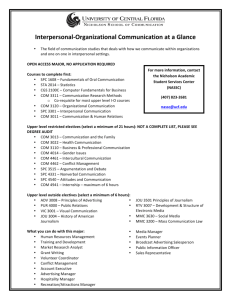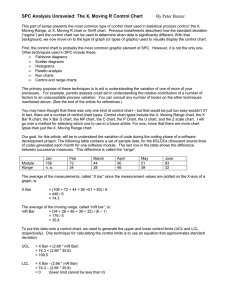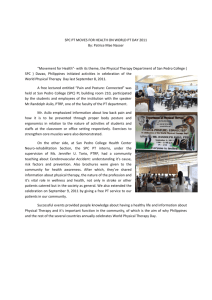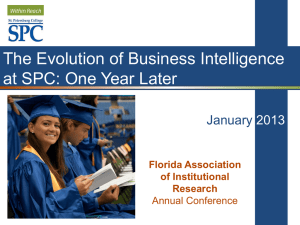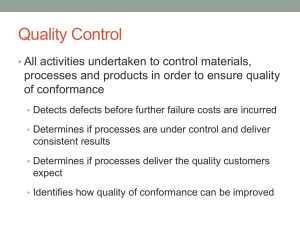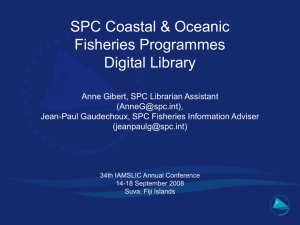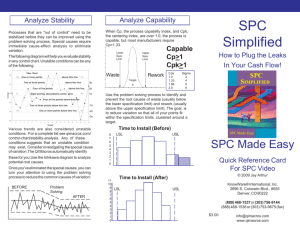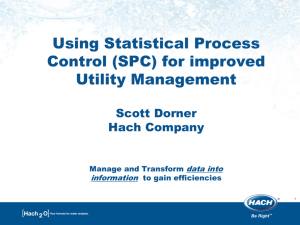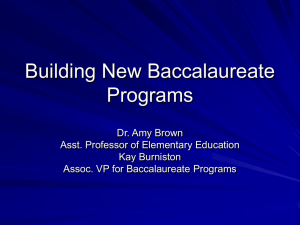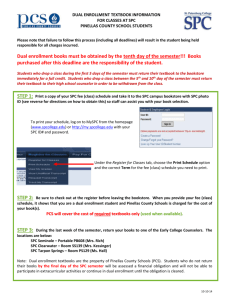Statistical Process Control Concepts
advertisement
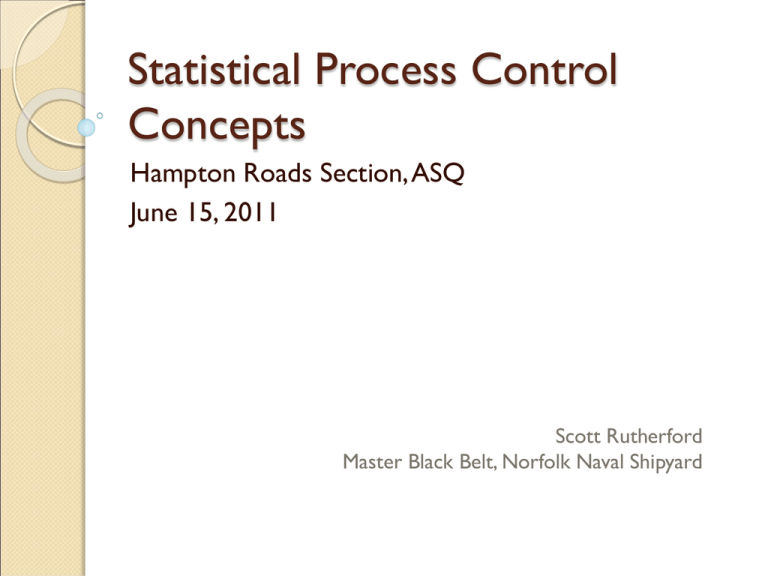
Statistical Process Control Concepts Hampton Roads Section, ASQ June 15, 2011 Scott Rutherford Master Black Belt, Norfolk Naval Shipyard Learning Objectives Understand the three general areas of SPC Understand the proper use of SPC in your Quality program Understand SPC’s pitfalls and success factors History 1920’s: “Created” by Walter Shewhart for Bell Labs WWII: W. Edwards Deming applies concepts to munitions manufacturing After WWII: Deming teaches SPC to Japanese to help build back their industrial base 1988: SPC applied to software industry becomes CMMI (Causal Maturity Model Integration) Shewhart’s original concept Physical process data is usually NOT normally distributed Processes either display: ◦ Controlled variation that is natural to the process ◦ Uncontrolled variation that is generated from outside the “process causal system” (assignable cause) Attacking process variation produces a product that consistently conforms to specifications Three Elements of SPC Understanding the Process Understanding the Causes of Variation Eliminating the sources of Assignable (Special) Cause variation Techniques for Understanding the Process Process Mapping Determine Measure of Quality ◦ From customer’s perspective ◦ Usually an output measure Determine Measure of Quality Predictor ◦ What In-process Measure is the most reliable predictor of the Quality Measure? Measure the Predictor ◦ Control Charts / Run Charts Understanding Causes of Variation Root Cause Analysis - Reactive ◦ Causal Mapping – 5 Whys ◦ Switch Theory ◦ Human Factors Analysis and Classification System (HFACS) – Swiss Cheese Analysis ◦ Kepner series (Tregoe, Fourie) ◦ Fishbone ◦ Others (Ford Global 8D, DuPont, etc.) Failure Modes & Effects Analysis (FMEA) Proactive Eliminating Special Cause Variation Identification ◦ Control Chart monitoring ◦ Control Chart Analysis (“rules”) Response ◦ Immediate Action (Control or Reaction Plan) – Getting back to the norm ◦ Short-term actions – Preventing reoccurrence ◦ Long-term actions – Eliminating cause Preventing Reoccurrence Immediate Knowledge capture Start of Work / Shift briefings Verbal / “Pen & Ink” Procedure changes Training Periodic self-assessments Proper monitoring of the process Eliminating Reoccurrence Lean Tools ◦ 5S ◦ Standard Work codification ◦ Mistake-proofing FMEA Analysis Process Knowledge Use ◦ R&D ◦ Next generation design Behavioral / Cultural Change Why SPC Initiatives often Fail “It’s All about the charts” “More important to train” “Don’t have time to figure out the source, get back to work!” “The control plan should have caught that!” “Sort out the bad to get enough good product to sell” “We have the time to do it over, but not enough time to do it right the first time” SPC succeeds when: Supervisors empowering front line workers in monitoring control charts and executing control plans There is a dedicated workforce to spend the time to analyze sources of variation Eliminating variation is a strategic initiative What other comments or questions do you have? scott.rutherford@navy.mil srlean6@gmail.com
